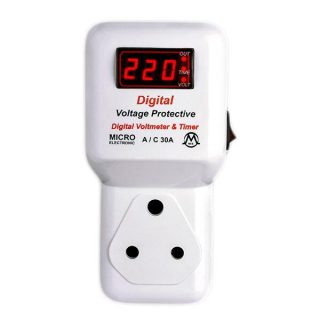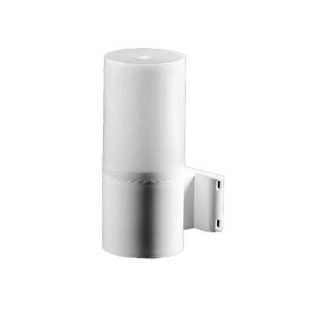

After six months, Speakers, Inc. is growing rapidly and needs to find a new place of business. Ted decides it makes the most financial sense for Speakers, Inc. to buy a building. Since Speakers, Inc. doesn’t have $500,000 in cash to pay for a building, it must take out a loan. Speakers, Inc. purchases a $500,000 building by paying $100,000 in cash and taking out a $400,000 mortgage. This business transaction decreases assets by the $100,000 of cash disbursed, increases assets by the new $500,000 building, and increases liabilities by the new $400,000 mortgage. As you can see, assets equal the sum of liabilities and owner’s equity.
Accounting Equation – Definition, Formula and Examples
- Additionally, it doesn’t completely prevent accounting errors from being made.
- Assets represent the ability your business has to provide goods and services.
- The owner’s equity is the value of assets that belong to the owner(s).
- You can witness the easy implementation of the tool and try it out to get a renewed experience while handling your accounting system.
- As we’ve learned previously, the accounting equation is a mathematical expression that shows the relationship among the different elements of accounting, i.e. assets, liabilities, and capital (or “equity”).
- Creditors include people or entities the business owes money to, such as employees, government agencies, banks, and more.
An accounting transaction is a business activity or event that causes a measurable change in the accounting equation. Merely placing an order for goods is not a recordable transaction because no exchange has taken place. In the coming sections, you will learn more about the different kinds of financial statements accountants generate for businesses. The expanded accounting equation goes hand in hand with the balance sheet; hence, it is why the fundamental accounting equation is also called the balance sheet equation. Any changes to the expanded accounting equation will result in the same change within the balance sheet.


Want More Helpful Articles About Running a Business?
The major and often largest value assets of most companies are that company’s machinery, buildings, and property. These are fixed assets that are usually held for many years. Assets include cash and cash equivalents or liquid assets, which may include Treasury bills and certificates of deposit (CDs). Business owners love Patriot’s award-winning payroll software.
Accounting equation examples
We also find that regulatory pressures have a moderator role and are positive in some relationships. Want to learn more about recording transactions and doing accounting for your small business? Current or short-term liabilities are employee payroll, invoices, utility, and supply expenses. Long-term liabilities cover loans, mortgages, and deferred taxes. We’ll explain what that means, along with everything else you need to know about the accounting equation as we go on.
- The accounting equation states that the amount of assets must be equal to liabilities plus shareholder or owner equity.
- We will now consider an example with various transactions within a business to see how each has a dual aspect and to demonstrate the cumulative effect on the accounting equation.
- In this case, Speakers, Inc. uses its cash to buy another asset, so the asset account is decreased from the disbursement of cash and increased by the addition of installation equipment.
- These may include loans, accounts payable, mortgages, deferred revenues, bond issues, warranties, and accrued expenses.
- The expanded equation is used to compare a company’s assets with greater granularity than provided by the basic equation.
Example: How to Calculate the Accounting Equation from Transactions
Current assets include cash and cash equivalents, accounts receivable, inventory, and prepaid assets. Current liabilities are short-term financial obligations payable in cash within a year. Current liabilities include accounts payable, accrued expenses, and the short-term portion of debt.
Understanding the Expanded Accounting Equation
- Although Coca-Cola and your local fitness center may be as different as chalk and cheese, they do have one thing in common – and that’s their accounting equation.
- As this is not really an expense of the business, Anushka is effectively being paid amounts owed to her as the owner of the business (drawings).
- The income statement is the financial statement that reports a company’s revenues and expenses and the resulting net income.
- Double-entry bookkeeping is a system that records transactions and their effects into journal entries, by debiting one account and crediting another.
- The remainder is the shareholders’ equity, which would be returned to them.
Liabilities, on the other hand, show how much money is owed. The three components of the accounting equation are assets, liabilities, and equity. As was previously stated, double-entry accounting supports the expanded accounting full accounting equation equation. Double-entry accounting is a fundamental concept that backs most modern-day accounting and bookkeeping tasks. The expanded accounting equation can be rearranged in many ways to suit its use better.

Transaction #3 results in an increase in one asset (Service Equipment) and a decrease in another asset (Cash). We will now consider an example with various transactions within a business to see how each has a dual aspect and to demonstrate the cumulative effect on the accounting equation. Capital essentially represents how much the owners have invested into the business along with any accumulated retained profits or losses. The capital would ultimately belong to you as the business owner. In the case of a limited liability company, capital would be referred to as ‘Equity’. This transaction affects both sides of the accounting equation; both the left and right sides of the equation increase by +$250.
- Owner’s or stockholders’ equity also reports the amounts invested into the company by the owners plus the cumulative net income of the company that has not been withdrawn or distributed to the owners.
- Adam Hayes, Ph.D., CFA, is a financial writer with 15+ years Wall Street experience as a derivatives trader.
- To prepare the balance sheet and other financial statements, you have to first choose an accounting system.
- The accounting equation is also called the balance sheet equation.


The double-entry practice ensures that the accounting equation always remains balanced, meaning that the left-side value of the equation will always match the right-side value. The accounting equation is a concise expression of the complex, expanded, and multi-item display of a balance sheet. The balance sheet equation answers important financial questions for your business. Use the balance sheet equation when setting your budget or when making financial decisions. Liabilities are debts (aka payables) that you owe to others.
But, that does not mean you have to be an accountant to understand the basics. Part of the basics is looking at how you pay for your assets—financed with debt or paid for with capital. When the total assets of a business increase, then its total liabilities or owner’s equity also increase. At the same time, it incurred in an obligation to pay the bank. In this form, it is easier to highlight the relationship between shareholder’s equity and debt (liabilities).
As you can see, all of these transactions always balance out the accounting equation. This equation holds true for all business activities and transactions. If assets increase, either liabilities or owner’s equity must increase to balance out the equation. The balance sheet reports the assets, liabilities, and owner’s (stockholders’) equity at a specific point in time, such as December 31.








دیدگاهتان را بنویسید